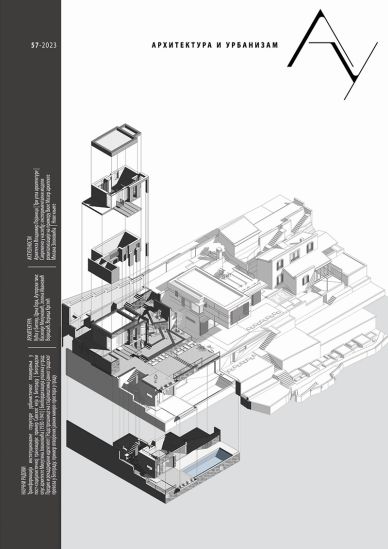Bilbordizacija ulazaka u grad: Predio i rekadrirani identitet
Sažetak
Rad istražuje postavlјanje bilborda na ulasku u grad i uticaj ovog fenomena na integritet i kulturni identitet grada. Polazna hipoteza je da nagomilavanje bilborda u ovom prostoru stvara vizuelno zagađenje koje uzrokuje višestruke probleme za kulturu grada, naročito kada se nalazi u zaštićenom području. Rad nastoji da ukaže na zapostavlјenost ovog prostora u trenutnom urbanističkom i društveno-kulturnom narativu i kroz koncept slike grada sugeriše na novoformirani predio rekadriranog identiteta. Istraživanje se kreće kroz studiju slučaja Jadranske magistrale u Crnoj Gori, dionica Jaz – Kotor, naime „bafer“ zone zaštićenog Prirodnog i kulturno-istorijskog područja Kotora. Cilј rada je da se prikaže slika grada i da se istakne ovaj urbani prostor kao faktor koji narušava kulturni identitet Kotora.
Reference
Baudrillard, J. 1994. Simulacra and Simulation. Ann Arbor: University of Michigan Press.
Carlson, A. 2000. Aesthetics and the Environment: The Appreciation of Nature, Art and Architecture. London: Routledge.
Castells, M. 2010. The Power of Identity. 2nd ed. Malden: Wiley-Blackwell.
Cullen, G. 1971. The Concise Townscape. Oxford: Elsevier.
Eko, U. 1973. Kultura, informacija, komunikacija. Beograd: Nolit.
Ermischer, G. 2003. Mental landscape. Landscape as idea and concept. Proceedings of the second meeting of the Workshop for the implementation of the European Landscape Convention. Strasbourg: Council of Europe.
Geerz, C. 1977. The Interpretation of Cultures. New York: Basic Books.
Gregory, D., Johnston, R. Pratt, G. Watts, M. Whatmore, S. (Eds.). 2009. The Dictionary of Human Geography (5th ed.). Oxford: Wiley-Blackwell.
Hall, S. 1997. Representation: Cultural representations and signifying practices. London: Sage Publications & Open University.
Kaplan, S., Kaplan, R. 1989. The Experience of Nature: A Psychological Perspective. Cambridge: Cambridge University Press.
Kim, H. Stepchenkova, S. 2016. Understanding destination personality through visitors' experience: A cross-cultural perspective. Journal of Destination Marketing & Management. 6(4), 416−425.
Koolhaas, R. 2002. Junkspace. October, 100, 175–190.
Koolhaas, R., Foster, H. 2013. Junkspace with Running Room. Devon: Notting Hill Editions Ltd.
Lapka, M., Cudlinova, E., Rikkon, S., Maxa, J. 2001. Intergrating nature, culture and society: The concept of landscape field. Ekológia (Bratislava), 20, 125−138.
Leach, N. 1999. The Anaesthetics of Architecture. Cambridge: The MIT Press.
Lefebvre, H. 1991. The Production of Space. Oxford: Basil Blackwell Ltd.
Lester, P. M. 1995. Visual Communication: Images with Messages. Belmont: Wadsworth Publishing Company.
Lynch, K. 1960. The Image of the City. Cambridge: The MIT Press.
Ministarstvo kulture Crne Gore. 2011. Menadžment Plan Prirodnog i kulturno-istorijskog područja Kotora. s.n.
Mumford, L. 1961. The City in History: Its Origins, Its Transformations, and Its Prospects. New York: Harcourt Brace Jovanovich.
Mumford, L. 1970. The Culture of Cities. New York: Harcourt Brace Jovanovich.
Nasar, J. L. 1994. Urban design aesthetics: The evaluative qualities of building exteriors. Environment and Behavior, 26(3), 377−401.
Ogilvy, D. 1985. Ogilvy on Advertising. New York: Random House Inc.
Palang H., Fry G. (eds). 2003. Landscape Interfaces. Cultural heritage in Changing Landscapes. Dordrecht: Springer Science+Business Media.
Porteous, J. D. 1996. Environmental aesthetics: Ideas, politics and planning. London: Routledge.
Proshansky, H. M., Fabian, A. K., & Kaminoff, R. (1983). Place-identity: Physical world socialization of the self. Journal of Environmental Psychology, 3, 57–83.
Relph, E. 1976. Place and placelessness. London: Pion Limited.
Said, E. 1993. Culture and Imperialism. New York: Vintage Books.
Saito, Y. 2007. Everyday Aesthetics. New York: Oxford University Press.
Scannell, L., Gifford, R. 2010. Defining place attachment: A tripartite organizing framework. Journal of Environmental Psychology, 30(1), 1−10.
Schama, S. 1995. Landscape and Memory. New York: Vintage Books.
Stedman, R. 2003. Is it really just a social construction? The contribution of the physical environment to sense of place. Society & Natural Resources, 16(8), 671−685.
Stedman, R. 2002. Toward a social psychology of place. Environment and Behavior, 34, 561–581.
Službeni list Crne Gore. 066/18. Pravilnik o bližem sadržaju studije zaštite kulturnih dobara.
Službeni list Crne Gore. 043/18. Pravilnik o bližim uslovima za postavljanje odnosno građenje privremenih objekata, uređaja i opreme.
Službeni list Crne Gore. 064/17, 044/18, 063/18, 011/19, 082/20. Zakon o planiranju prostora i izgradnji objekata.
Službeni list Crne Gore. 056/13, 013/18, 067/19. Zakon o zaštiti Prirodnog i Kulturno-istorijskog podrucja Kotora.
Službeni list Crne Gore. 49/10. Zakon o zaštiti kulturnih dobara.
Tuan, Y. F. 1990. Topophilia: A study of environmental perception, attitudes, and values. New York: Columbia University Press.
Venturi, R., Brown, D. S., Izenour, S. 1977. Learning from Las Vegas. The forgotten symbolism of architectural form. Cambridge: The MIT Press.
Sva prava zadržana (c) 2023 Arhitektura i urbanizam

Ovaj rad je pod Creative Commons Autorstvo-Deli pod istim uslovima 4.0 međunarodnom licencom.

